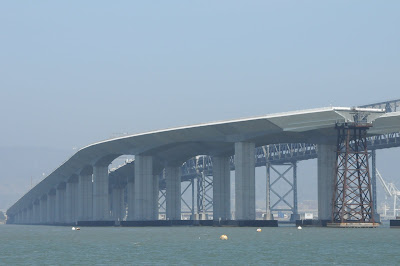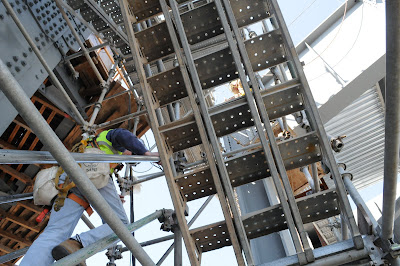New works on removing and replacing some sections of the 72-year-old structure began in 2003, and is scheduled for completion in 2009. My documentary project is about the today's changes of the Bay Bridge which become history as well.
 The cities of San Francisco and Oakland always seemed like an engineering and financial impossibility. The water separating the cities was too deep and wide. In fact, in 1921 a transbay underwater
The cities of San Francisco and Oakland always seemed like an engineering and financial impossibility. The water separating the cities was too deep and wide. In fact, in 1921 a transbay underwatertube crossing was recommended as the best way of crossing the bay. However this idea was inappropriate for automobile traffic. Finally, with the popularity and mass production of the automobile, it was determined that a bridge was necessary. In 1926, was created the Toll Bridge Authority, for bridging San Francisco and Alameda County. Almost as soon as the bridge was opened in 1936, traffic on the Bay Bridge exceeded levels predicted for 1950. In the early years, the bridge carried three lanes of auto traffic in each direction on the upper deck. The lower deck was reserved for truck traffic and the inter-urban railway. Increasing traffic volumes have made additional innovations necessary. One of the most important innovations on the Bay Bridge was the installation of a signal system to regulate traffic on the bridge. A section of the bridge was damaged in the 1989 earthquake which measured 7.1 on the Richter scale. Retrofit work to prevent any future failures has begun.
Some Facts about the Bay Bridge:

Length: 23,000 feet (4.5 miles), total project: 8.4 miles.
Tower Height: 526 feet (from water level)
Deepest Bridge Pier: 242 feet below water level - 396 feet high
Opened: November 12, 1936
Cost: $77 million (Including Transbay Transit Terminal)
Traffic Lanes: Upper level: five lanes westbound
Lower level: five lane eastbound
Avg. Daily Traffic: 270,000 vehicles























